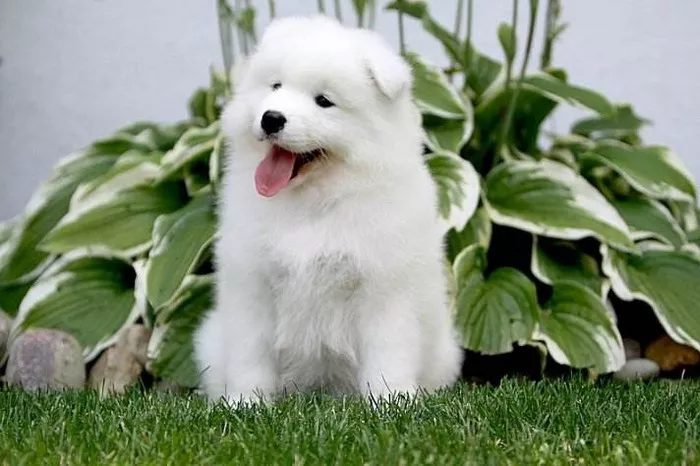Japanese Spitzes are a popular breed of dog known for their fluffy white coats, pointed ears, and playful personalities. As with any breed, potential owners may wonder how big Japanese Spitzes can get. In this article, we will explore the various factors that can influence the size of Japanese Spitzes and provide information on their growth patterns.
Genetics and Size
One of the primary factors that can influence the size of a Japanese Spitz is genetics. As with all dogs, Japanese Spitzes inherit their physical traits from their parents. If both parents are small, their offspring are likely to be small as well. Conversely, if both parents are large, their offspring are likely to be large. However, even if both parents are of average size, their offspring may still vary in size.
It is worth noting that genetics can be a complicated matter. Even if both parents are of the same size, their offspring may still vary in size. This is because dogs have a variety of genes that can influence their size, and these genes can interact in complex ways. Additionally, there may be other factors at play, such as environmental factors, that can influence a dog’s growth and development.
Nutrition and Size
Another factor that can influence the size of a Japanese Spitz is nutrition. Proper nutrition is essential for a dog’s growth and development. If a Japanese Spitz does not receive adequate nutrition, they may not reach their full potential size. On the other hand, if a Japanese Spitz is overfed, they may become overweight, which can lead to health problems.
When it comes to feeding a Japanese Spitz, it is important to provide them with high-quality dog food that is appropriate for their age, size, and activity level. Puppies have different nutritional needs than adult dogs, so it is important to feed them a puppy-specific food until they are around one year old. Additionally, it is important to monitor a Japanese Spitz’s weight and adjust their food intake as needed to ensure they maintain a healthy weight.
Exercise and Size
Exercise is another important factor that can influence the size of a Japanese Spitz. Regular exercise helps to strengthen their muscles and bones, which can help them grow to their full potential size. However, too much exercise can be harmful, especially for young puppies whose bones are still developing. It is important to provide a balance of exercise and rest for a Japanese Spitz.
When it comes to exercise, it is important to provide a Japanese Spitz with plenty of opportunities to play and run around. However, it is also important to avoid overexerting them. Puppies should not be taken on long walks or runs until they are at least six months old. Additionally, it is important to avoid activities that put excessive strain on a Japanese Spitz’s joints, such as jumping or climbing stairs.
Age and Size
The age of a Japanese Spitz can also influence their size. Like all dogs, Japanese Spitzes go through different stages of growth and development. They are considered puppies from birth to around six months of age. During this time, they experience rapid growth and may double or even triple in size. From six months to one year of age, they continue to grow but at a slower rate. After one year of age, they are considered adults and have reached their full size.
It is worth noting that the age at which a Japanese Spitz reaches their full size can vary. Some Japanese Spitzes may reach their full size by nine months of age, while others may continue to grow until they are two years old. Additionally, some Japanese Spitzes may experience growth spurts or periods of slower growth, which can also influence their final size.
Gender and Size
Gender can also play a role in the size of a Japanese Spitz. Male dogs are typically larger than female dogs. However, the difference in size between male and female Japanese Spitzes is not significant. Male Japanese Spitzes may be slightly taller and heavier than female Japanese Spitzes, but the difference is usually only a few inches and pounds.
It is also worth noting that there can be variation within genders. Some male Japanese Spitzes may be smaller than some female Japanese Spitzes, and vice versa. Additionally, there may be other factors at play, such as genetics and nutrition, that can influence a Japanese Spitz’s size regardless of their gender.
Average Size of Japanese Spitzes
While there is some variation in size within the breed, most Japanese Spitzes fall within the average height and weight range. According to the American Kennel Club (AKC), the ideal height for a Japanese Spitz is between 12 to 15 inches (30 to 38 cm) at the shoulder. They typically weigh between 10 to 25 pounds (4.5 to 11 kg).
It is worth noting that these are guidelines, and there can be variation within the breed. Some Japanese Spitzes may be smaller or larger than these averages. Additionally, different organizations may have slightly different guidelines for the ideal size of a Japanese Spitz.
Conclusion
In conclusion, the size of a Japanese Spitz can vary depending on several factors, including genetics, nutrition, exercise, age, and gender. While there is some variation in size within the breed, most Japanese Spitzes fall within the average height and weight range. Proper nutrition and exercise are essential for a Japanese Spitz’s growth and development. If you are considering adding a Japanese Spitz to your family, be sure to provide them with the care they need to reach their full potential size.


